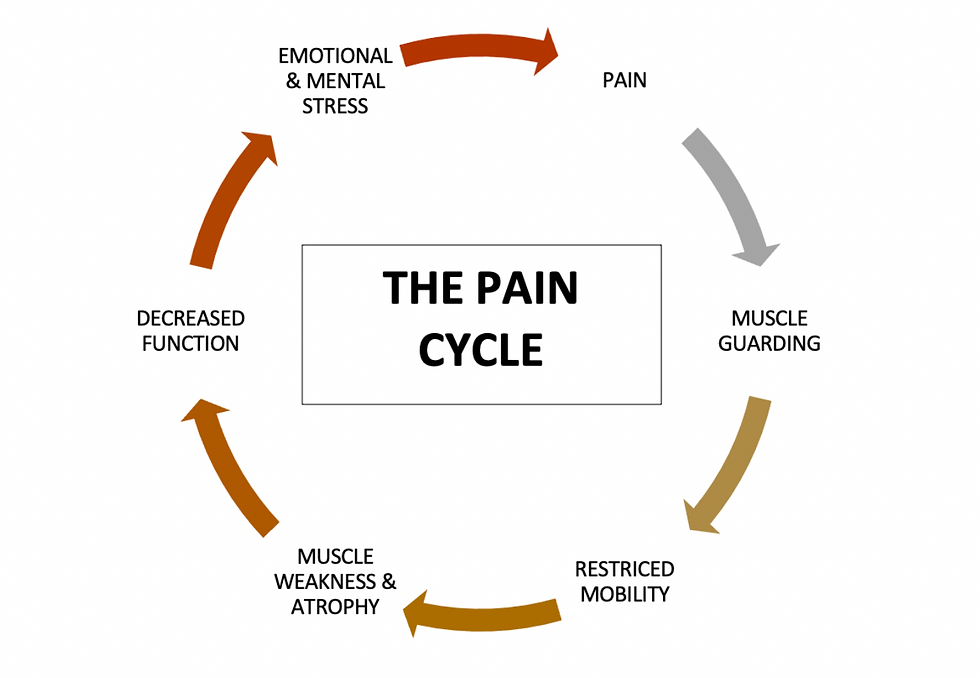UNDERSTANDING PROPRIOCEPTION - Your Hidden Superpower for Healing and Well-Being
- Madi

- Oct 17, 2023
- 3 min read
When you walk down the street, have you ever stopped to think about how your body knows exactly where your foot is going to land with each step? Or have you marveled at how you can effortlessly pick up a glass of water and bring it to your lips without spilling a drop? The answer lies in a remarkable sensory system known as proprioception.
In this blog post, we'll delve into what proprioception is, how it works, its crucial role in our physical and emotional well-being, and how it can aid in healing, particularly in conditions like Complex Post-Traumatic Stress Disorder (C-PTSD) and chronic pain.

A daily practice of Somatics or Yoga Nidra can improve your proprioceptive abilities and improve a sense of calm.
What is Proprioception?
Proprioception is our body's ability to sense the position, movement, and orientation of our various body parts. It's the sense that allows us to know where our limbs are in space without having to look at them. This internal GPS system is made possible by a network of receptors in our muscles, tendons, joints, and skin that send constant feedback to our brain.
How Does Proprioception Work?
Proprioception is a complex sensory system that involves several components:
Muscle Spindles: These are specialized receptors found within skeletal muscles. They detect changes in muscle length and tension, providing information about muscle stretch and contraction.
Golgi Tendon Organs: Located at the junction of muscles and tendons, these receptors monitor changes in muscle tension. They help prevent muscle damage by regulating muscle contractions.
Joint Receptors: These receptors are situated in and around our joints and provide information about joint angle and movement.
Skin Receptors: Even the skin contributes to proprioception through receptors sensitive to pressure and vibration.
All these receptors send signals to the brain, where the information is processed, enabling us to coordinate our movements and maintain balance.

Why Is Proprioception Important?
Proprioception is a fundamental sense that underpins many aspects of our daily lives. Here's why it's so crucial:
Coordination and Movement: Without proprioception, simple tasks like walking, typing, or even holding a conversation would be extremely challenging. It allows us to move with precision and grace.
Balance and Posture: Proprioception is essential for maintaining balance and posture. It's what keeps us upright and helps us adjust our body position in response to changes in the environment.
Injury Prevention: Good proprioception can reduce the risk of injury by alerting the brain to potentially harmful movements or positions.
Emotional Well-Being: Beyond the physical aspects, proprioception plays a vital role in our emotional well-being. Being in tune with our bodies can help us recognize and manage stress and anxiety.
Proprioception and Healing
Proprioception isn't limited to physical health; it can be a valuable tool for emotional healing too, particularly in the context of C-PTSD and chronic pain.
C-PTSD: People with C-PTSD often struggle with dissociation, where they feel disconnected from their bodies. Developing proprioceptive awareness can help individuals reconnect with their bodies and regain a sense of control, reducing emotional distress.
Chronic Pain: Chronic pain conditions often involve altered proprioception. Pain can lead to movement compensations and abnormal postures, further exacerbating the problem. By improving proprioceptive awareness, individuals can alleviate some of the pain and improve their overall well-being.

Somatic Movement and Boundary Work
Three effective approaches for enhancing proprioceptive awareness are somatic movement, yoga nidra and boundary work.
Somatic Movement: This involves mindful, slow movements that help individuals become more aware of their bodies. Somatic movement practices, like Feldenkrais or Alexander Technique, can be used to retrain proprioception and improve movement patterns.
Boundary Work: Establishing healthy boundaries is integral to emotional healing. It allows individuals to feel safe and secure in their environment, which, in turn, supports proprioceptive awareness. Techniques such as body-centered therapy can be beneficial in this regard.
Yoga Nidra: According to neuroscientist Andrew Huberman1 a daily practice of Yoga Nidra is one of the simplest ways to improve sleep, reduce stress and help reset the brain. This meditation includes progressive relaxation by scanning you body and practicing positive visualization.
Proprioception is a hidden superpower that influences both our physical and emotional well-being. By understanding its importance, we can develop strategies to enhance proprioceptive awareness, ultimately leading to improved physical health, emotional healing, and a better quality of life. Whether you're recovering from an injury, managing chronic pain, or working through emotional trauma, proprioception can be a valuable tool on your journey to well-being.



Comments